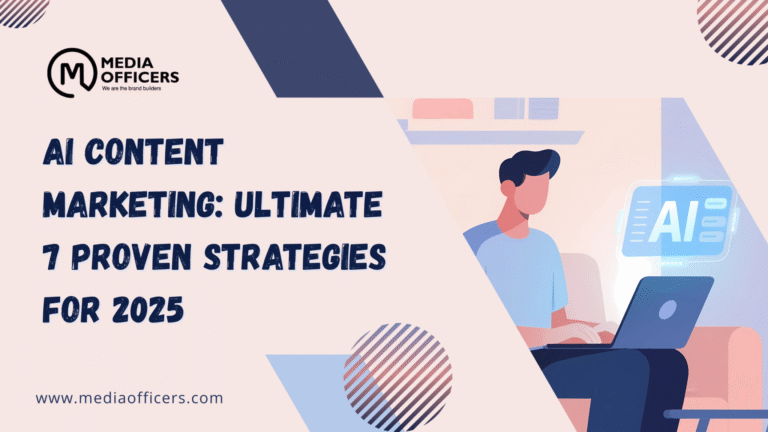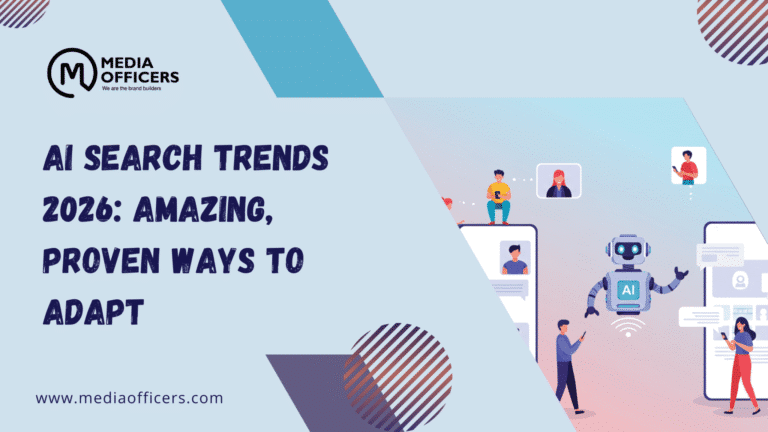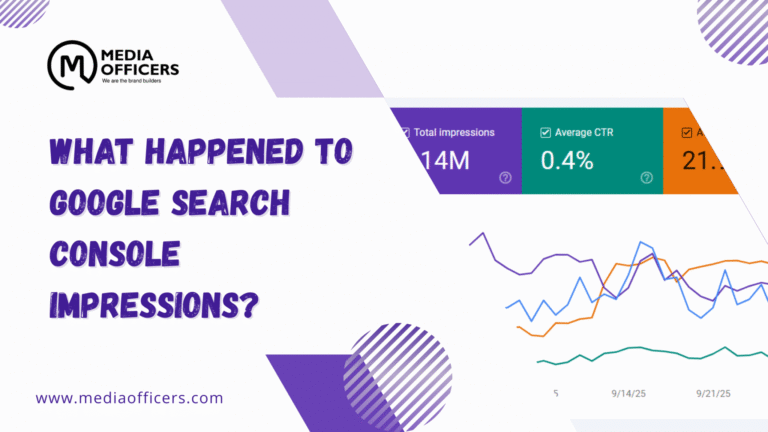The influence of brand-controlled sources for AI search is growing. A brand visibility analysis by Yext examined 6.8 million AI citations across ChatGPT, Gemini, and Perplexity drawn from 1.6 million queries between July and August. The takeaway is clear: 86% of AI citations come from sources brands control or influence, challenging the narrative that forums like Reddit are the primary wellspring of AI answers. This shift has real consequences for how marketers optimize content and how consumers encounter information in generative results.
Below we unpack what this means for brands, marketers, and anyone aiming to influence AI-generated results. The data points to a simple truth: controlling credible, crawlable content is a powerful lever in modern search ecosystems. By aligning content strategy with how AI platforms source information, you can improve visibility while delivering accurate, useful experiences to users.
The surprising numbers behind AI citations
The latest findings paint a different picture from common assumptions about AI answers. Across all industries analyzed, 86% of AI citations came from sources owned or managed by brands. This signals a decisive shift toward first-party control and structured content rather than purely community-driven references.
- Websites lead: 44% of citations originated from first-party sites you own or manage.
- Listings close behind: 42% came from authoritative listings in maps, directories, and data aggregators.
- Reviews and social: 8% of citations linked to reviews and social content.
- Forums: Only 2% came from discussion forums like Reddit and other communities.
The methodology analyzed 6.8 million AI citations across 1.6 million queries for four intent types and four industries, using Yext Scout to test how results vary across brand-controlled sources for AI search and third-party references. The findings underscore the growing influence of content that brands can directly shape and verify.
Why brand control matters for AI visibility
If the most impactful sources are the ones you can influence, content quality, accuracy, and structure become the new battleground for AI visibility. When AI models pull from credible, canonical sources, the onus is on brands to maintain fresh information, correct data, and consistent signals across every channel an AI might consult.
From an SEO perspective, the implications are clear. Crawlability and structured data enable AI systems to interpret and incorporate your content reliably. This is not just about ranking in traditional search results; it’s about appearing reliably in generative responses that many users rely on for fast answers.
Where AI sources come from by channel
Different source types contribute to AI answers in distinct ways. Here is how the distribution plays out across channels:
- Websites (first-party): 44% of AI citations come from pages brands own, with clear signals of authority and recency.
- Listings: 42% come from structured listings, maps, and directory entries that AI can read and reconcile with real-world locations.
- Reviews and social: 8% reflect consumer feedback and social signals that AI can reference when forming opinions.
- Forums: a small 2% slice, often overshadowed by brand-controlled content in many verticals.
This distribution highlights a practical SEO takeaway: invest in brand-owned content and ensure it appears prominently in listings and knowledge panels, not just on your primary website. When AI can verify your data quickly and accurately, it will more frequently cite your brand as a trustworthy source.
Industry variations in AI citation sources
Different sectors show distinct patterns in where AI results pull credible information from. Here are the notable variations observed in the study:
- Retail: 47.6% of citations come from brand websites, underscoring the importance of product detail pages, rich content, and structured product data.
- Finance: 48.2% originate from authoritative local pages, indicating the value of local authority and compliance-aligned content.
- Healthcare: 52.6% come from listings like WebMD and Vitals, suggesting health information aggregators play a strong role in AI answers.
- Food service: 13.3% from reviews and social, the highest proportion among the sectors examined, signaling the weight of user-generated content here.
Across these industries, the common thread is clear: brand-owned and authoritative listings tend to dominate AI citations more than user forums or social chatter. This reinforces the case for a unified content and listing strategy that keeps data accurate, consistent, and accessible to AI crawlers.
AI model bias: who cites what, and why it matters
Different AI models show distinct tendencies in source selection, which has practical implications for how you optimize content:
- Gemini tends to favor websites (about 52.1% of citations come from webpages) when answering queries, making website quality and clarity essential for model responses.
- OpenAI leans more on listings (roughly 48.7%), highlighting how directory pages, maps, and data panels influence outputs.
- Perplexity spreads citations across sources like MapQuest, TripAdvisor, and other aggregators, suggesting a broader sourcing strategy that includes travel and local data.
Understanding these biases helps brands tailor content formats and distribution strategies to align with the sources AI models prefer. In practice, this means enriching structured data across your primary site and ensuring your local and healthcare or product listings are up to date and consistent across platforms.
Actionable steps to influence AI results
Brands that want to shape AI-generated answers should adopt a holistic approach to content and nominations across channels. The following steps translate the Yext findings into concrete actions you can implement now:
- Audit and align factual data: start with a comprehensive data audit of your brand, products, locations, and services. Correct inconsistencies and unify naming conventions across your site and listings.
- Strengthen first-party content: publish authoritative pages with clear, concise answers to common questions. Use well-structured headings, bullet points, and tables where helpful to improve readability and AI readability.
- Prioritize crawlability: ensure your robots.txt, sitemap, and internal linking encourage search engines and AI crawlers to access your most important content quickly.
- Leverage schema markup: implement JSON-LD structured data for products, services, locations, FAQs, and reviews to provide explicit signals to AI systems.
- Optimize local and category listings: claim and optimize listings on maps, directories, and local data publishers. Maintain consistent NAP (name, address, phone) and business details.
- Monitor and manage reviews: actively solicit credible reviews and respond to feedback. Reviews contribute to trust signals that AI systems consider in citations.
- Publish credible, updated health and policy information where applicable, especially for healthcare and finance sectors needing high trust signals.
- Consistency across channels: align titles, meta descriptions, and content across your site and external listings so AI sees a single, authoritative brand voice.
- Measure AI visibility: track changes in AI-driven citations by monitoring how changes to content and listings affect AI responses over time.
Step-by-step SEO strategy to execute
Use this practical, phased plan to steadily improve how AI sources cite your brand. Each step builds on the last to create a cohesive presence that AI can trust and reference.
- Phase 1: Discovery map all data points you own that AI could reference, including website pages, product catalogs, local listings, and review profiles.
- Phase 2: Content optimization optimize pages for clarity, solutions, and actionable answers. Include short-form FAQs that mirror common user questions and real-world intents.
- Phase 3: Technical foundations implement schema markup, ensure clean URLs, fast loading times, and accessible content for crawlers.
- Phase 4: Listings consolidation audit and harmonize listings across maps and directories. Update every entry with consistent branding and contact information.
- Phase 5: Reputation signals generate and collect high-quality reviews, and respond to feedback to demonstrate active engagement.
- Phase 6: Local and channel expansion extend presence to relevant local and industry-specific directories to broaden AI citation sources.
- Phase 7: Measurement and iteration regularly measure AI citation shifts, refine content, and adjust signals based on data insights.
Throughout these phases, keep brand integrity and user value at the center. The most impactful sources are those you can control, refine, and prove with data. In practice, this approach creates a virtuous cycle: better data leads to better AI citations, which in turn drives more qualified traffic and higher trust in your brand.
Frequently Asked Questions
What are brand-controlled sources for AI search?
Brand-controlled sources for AI search refer to content and data that a brand owns or directly maintains, such as the company website, official listings, and compliant knowledge bases. These sources typically provide the most reliable signals for AI systems when generating answers.
Do AI models prefer certain source types?
Yes. Studies show biases where some models rely more on websites, others on listings, and some on aggregator sources. Understanding these tendencies helps brands tailor their optimization efforts across websites, listings, and structured data to maximize reach in AI responses.
How can a brand improve its AI search visibility?
Prioritize accurate, up-to-date content across your site and key listings, implement structured data, ensure crawlability, manage reviews, and harmonize data across platforms. Regularly audit data quality and refresh content to keep AI citations credible and current.
Will AI citations shift toward forums or user-generated content?
Current data suggests forums account for a small share of AI citations, with brand-controlled sources dominating. However, consumer discussions remain influential in certain sectors, so brands should monitor sentiment and respond where appropriate while focusing primarily on authoritative, controllable signals.
Conclusion
In 2025, brand-controlled sources for AI search are not just a technical preference but a strategic necessity. The latest findings from Yext underscore that a substantial majority of AI citations originate from sources brands can manage, optimize, and verify. This reality elevates content quality, data accuracy, and structured data to a central role in both SEO and AI strategy. By aligning websites, listings, reviews, and local data with a cohesive authoritativeness framework, brands can improve not only traditional visibility but also AI-driven credibility and trust. Embrace the shift: design your content and distribution with AI in mind, and you will shape how users discover and trust your brand in the age of generative search.





